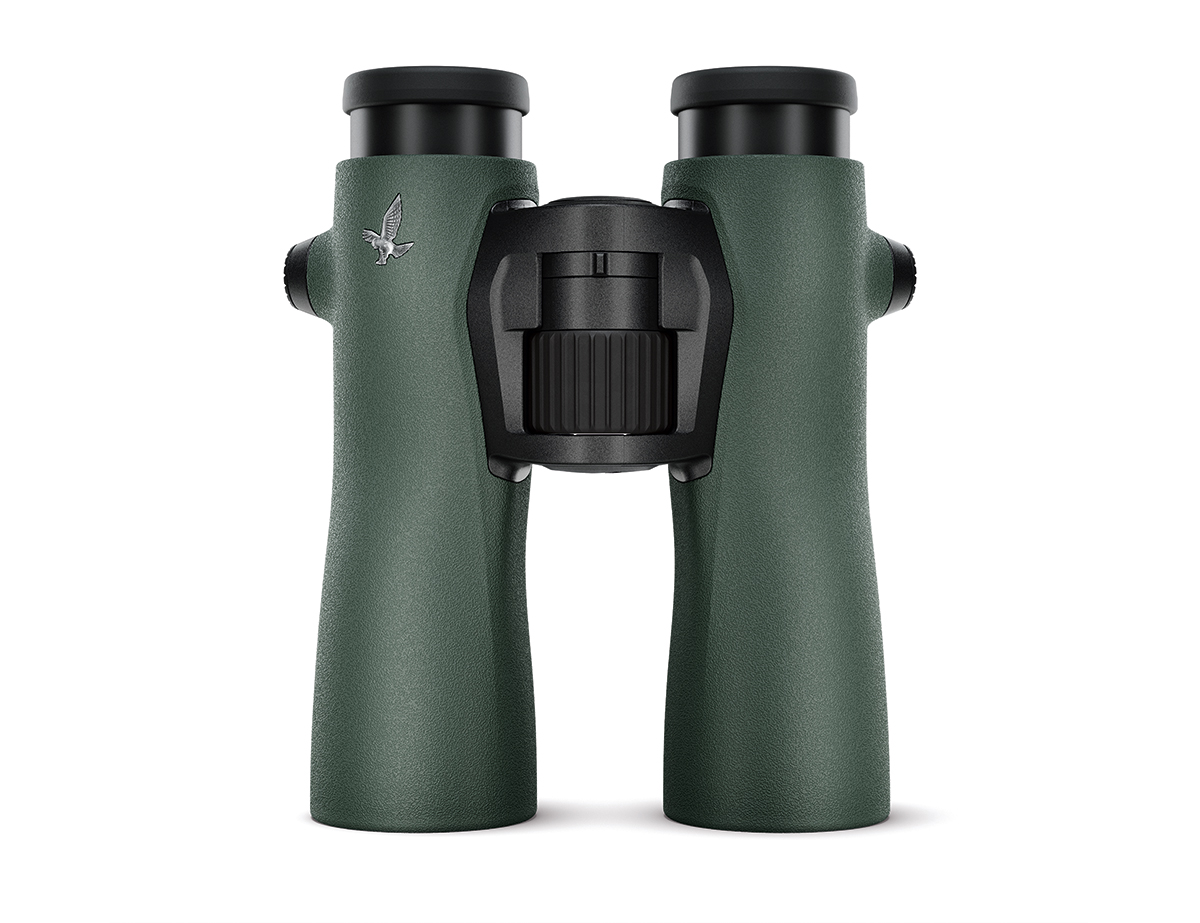Swarovski NL Pure 8x42 W B binocular
"Wow!" was the only word I could utter when I took my first look through Swarovski's NL Pure 8x42 binocular. Perched high on a hill overlooking one of my local reservoirs and surrounded by mixed woodland, interlaced with grazing and arable farmland, the wide range of habitat could not have made for better viewing.
'Wide' being the operative word in this case, as the Austrian optics manufacturer's new range of 42 mm binoculars – comprising 8x, 10x and 12x magnifications – combines an impressively extensive field of view with a major design change, which the company suggests will take wildlife viewing to the next level.

With a single bridge connection, the new-look, slimline body represents a radical departure from the acclaimed EL range, Swarovski's current flagship models, which will continue, albeit in second place. But don't read too much into this – 'slimline' does not mean skimping on quality and, in fact, the NL Pure oozes 'quality', from solidity and robustness to smooth mechanics and aesthetics.
Looks aside, the new design has set out to achieve two major goals. Firstly, to substantially enhance the viewing experience by increasing the field of view, and secondly, to deliver overall user-friendliness by improving ergonomics. Have these goals been achieved? Looking at the facts and figures, 159 m at 1,000 m represents a 20% increase in the field of view over that delivered by the 8.5x42 EL, which I found highly evident during field use. This is a major element in the model's 'wow' factor.
But what about ergonomics? The new body shape, with its mid-line barrel narrowing, compression and flattening, provides perfect balance while allowing my fingers to wrap comfortably around the chassis, maintaining grip and keeping that all-important focusing finger relaxed and straight. So far, so good.
The central focusing wheel, a little more than one finger's width, is broadly milled, and just shy of two, very smooth, clockwise rotations take the in-focus distance from 2 m to infinity. I found in general use, it took approximately one quarter of a turn to focus on subjects between 10 m and 'long distance'. It's worth noting that the close-focus distance of the equivalent EL model is 3.3 m, so improvement has also been made in this area.
Staying with focusing, another neat design innovation is the dioptre mechanism. Integrated within the bridge, it consists of a narrow ring with a small spur, which allows fingertip adjustment, with the scale of settings displaying four points either side of a central zero, at which there is a subtle click-stop evident. With the desired setting achieved, the dioptre stays put. It might be argued that the spur could be accidentally knocked, but it would have to be subjected to some significant force for this to happen.
Enhancing the comfort factor further, the eyecups twist out, 'semi-locking' in six positions above fully retracted. I could still appreciate the full field of view up to and including retracted position four, after which the range began to narrow. The rubber covering on the eyecups is soft, but it's relatively thin and flat, and while not outrightly uncomfortable, I would have liked to have seen a softer, deeper, more rounded rubber covering here.
Naturally, I was impressed with the image. The already stunning colour fidelity, sharpness and brightness associated with the EL (from which the NL Pure takes its prism system), now augmented by that extra-wide, flat field of view, seemed almost to represent a classic example of the whole being greater than the sum of the parts.
A sensation of depth and 3D imagery are also in there, while the field of view is sharp to the very edges, where the curvature is negligible. A very low level of chromatic aberration contributes significantly to the overall image quality.
In the field I was able to appreciate the finer points of plumage detail on early autumn passage waders moving through my local area. The stand-out rusty-copper tones of Icelandic Black-tailed Godwits came to life and the pale, creamy tips to the wing coverts of a fly-by juvenile Western Marsh Harrier were depicted in stark contrast against its otherwise dark brown plumage.
To help keep the binocular in tip-top condition, there is what I would describe as a 'heavy-duty' rainguard to protect the oculars; the clip-in objective covers, which were introduced on the EL back in 2015, also feature, although they, too, are said to have been improved. Furthermore, the soft, padded carry case has been manufactured from an eco-friendly form of polyester.
While I am struggling to find fault with the NL Pure, all of the above comes at a price, and this for me is weight. At 840 g and even with a magnesium-based chassis, the NL Pure is 5 g heavier than the equivalent EL and a long day of field use may be difficult for some users; I would recommend using a harness in this instance.
The price tag of £2,370 is perhaps less than I would have expected. The range goes on sale on 1 September.
Further info
- Price: £2,370
- Size: 158x131 mm
- Weight: 840 g
- Field of view: 159 m at 1,000 m
- Light transmission: 91%
- Close focus: 2 m
- Gas-filled: yes
- Waterproof: yes
- Guarantee: 10 years
Verdict
+ Extensive field of view
+ Image has stunning colour fidelity, sharpness and brightness
- The model is somewhat heavy


